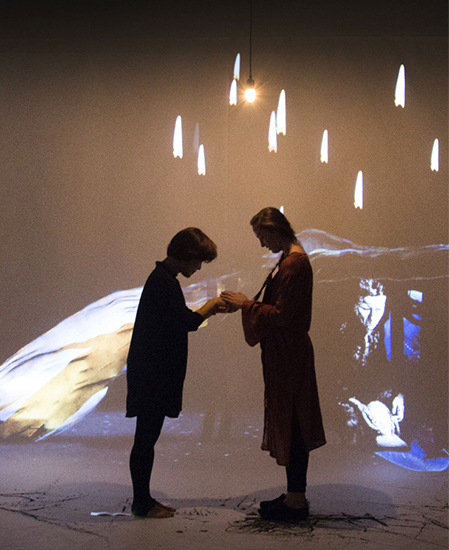I used the literal definition of empathy " take off your own shoes then step into other's shoes" in my performance.
During this series, I asked my audiences to take off their shoes and step into the shoes I had created for them. These shoes had been reformed and programmed so that, when two people touched while wearing them, silenced voices and lights came forth. These sounds and sights revealed a hidden truth: that the shoes were once worn by other people, whose suffering had been ignored by others.
One particular pair had belonged to a mother who had lost her son. In 2014, our paths crossed and she told me about the tragic disaster that had claimed her son’s life. After hearing her heartbreaking story, I held her hand and experienced a strong surge of empathy.
This was the moment I wanted to recreate for my audience: the moment of connection with another. I was inspired by the use of bodies as the medium for this communication, and by the idiomatic definition of ‘empathy’:
“to take off your own shoes, and to step into another’s.”




